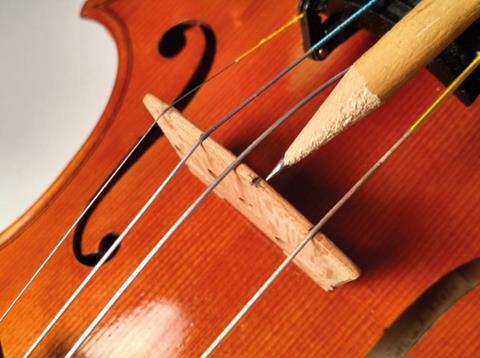Korinthia Klein presents a simple player’s guide to violin maintenance, without encroaching on luthiers’ territory

The following is an extract from an article on instrument care for players in The Strad’s January 2021 issue. To read in full, click here to subscribe and login. The January 2021 digital magazine and print edition are on sale now.
Strings should be changed on a schedule of about once a year. Serious players may wear out their strings in a matter of weeks, and some casual players can get away with up to two years out of a decent set of strings. Anything much beyond that is self-defeating. I’ve met many people who think you only change your strings when they break, which isn’t true. It’s not uncommon for E strings on violins to break because they are so thin, but it is rather unusual to break thicker strings unless you are new to using your pegs to tune. If you are overdue for a new set of strings, treat yourself to something nice. If you need to scrimp anywhere in your maintenance budget, it shouldn’t be on strings since they are central to the sound you want to make.
Read: How often should you change your strings?
A few other basic things to note about changing your strings is to do them one at a time, to lubricate your string slots, and to check that your bridge is standing straight.
The bridge is held in place by string tension, so if you take all your strings off at once, the bridge will fall, and so might the soundpost inside. Changing your strings one at a time will also prevent you from accidentally mixing up your pegs, which aren’t interchangeable.
Changing your strings is the perfect opportunity to rub a bit of graphite into the string slots on both the bridge and the nut. This helps the strings glide better over those surfaces, and is a simple thing players can do to improve the working of their strings.
The back of the bridge (the side facing the tailpiece) should be standing perpendicular to the top of your instrument. The top of the bridge can get pulled forward during the process of repeatedly tuning new strings up to pitch as they stretch. If possible, ask a luthier to walk you through how to check the straightness of your bridge, and show you how to stand it up when it’s leaning.
-
This article was published in the January 2021 Jean-Guihen Queyras issue
The French cellist on recording Beethoven’s ‘Triple’ Concerto during the pandemic and the value of working with his musical ‘family’. Explore all the articles in this issue.Explore all the articles in this issue
More from this issue…
- French cellist Jean-Guihen Queyras
- CT scanning Stradivari’s ‘Messiah’
- Remembering cello tutor George Neikrug
- Renaud Capuçon on recording Elgar’s Violin Concerto
- How players can take better care of their instrument
- Playing Tchaikovsky with just two left-hand fingers
Read more playing content here












































1 Readers' comment